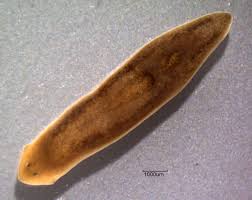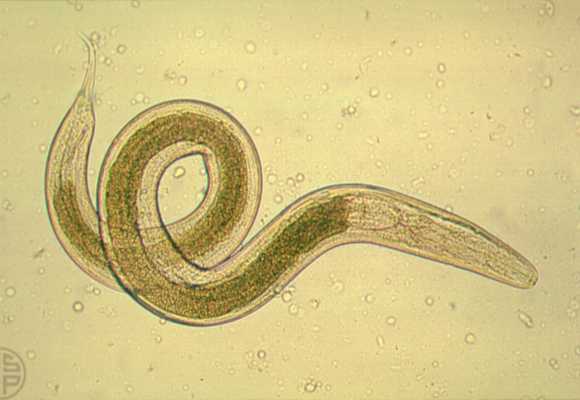Revision Notes on Phylum Platyhelmithes and Nematoda
Phylum Platyhelmithes
(i) “Platyhelminthes” means flatworms (Gr., platys = flat; helmins = worms); their body is dorsoventrally flattened.
(ii) Salient features:
 (1) They are dorsoventrally flattened like a leaf
(1) They are dorsoventrally flattened like a leaf
(2) They show organ grade of organization
(3) They are acoelomate animals
(4) They are triploblastic animals.
(5) They are bilaterally symmetrical animals.
(6) Some members have segmented body.
(7) Many of the parenchyma cells give rise to muscle fibres.
(8) The digestive system is completely absent from Cestoda and Acoela.
(9) The respiratory organs are absent. In parasites respiration is anaerobic
(10) There is no circulatory system
(11) The excretory system is formed of protonephridia (flame cells)
(12) The nervous system is well developed.
(13) They are hermaphrodites, i.e., both male and female reproductive organs are present in the same animal
(14) Fertilization is internal in them.
(15) They are free-living or parasitic.
(iii) Classification of Platyhelminthes
(a) Class 1 - Turbellaria
(1) Most of the turbellarians are free living but some of them are ecotocommensal or parasitic
(2) The body epidermis is either cellular or syncytial
(3) Segmentation is absent
(4) Digestive system is present except in a few
(5) Suckers are absent
(6) Life cycle is simple
(7) Example: Dugesia, Notoplana, Bipalium
(b) Class (2) – Trematoda
(1) Ecto or endoparasites of vertebrates; commonly called flukes.
(2) Body mostly oval, unsegmented.
(3) Body wall without cilia, but covered by a thick, resistant, syncytial tegument.
(4) Suckers, and often hooks and spines, present for attachment to host tissues.
(5) Sense organs usually absent in adults.
(6) Digestive system well developed with terminal mouth, but no anus.
(7) Mostly hermaphrodite. Life cycle is simple or complicated.
(8) Examples: Polystomum, Fasciola, Schistosoma (blood fluke of man and other mammals).
(c) Class (3) – Cestoda
(1) All are endoparasites. Mostly found in alimentary canal of vertebrates; commonly called tapeworms.
(2) Body long and slender, tape-like, usually divided into small segments
(3) Body wall non-ciliated, with a thick tegument.
(4) Anterior end with suckers and other attachment organs.
(5) No mouth; digestive system absent.
(6) Sense organs absent.
(7) Each proglottid contains one or two complete sets of hermaphrodite (bisexual) reproductive organs.
(8) Life-cycle usually complicated with alternation of hosts. Embryo hooked.
(9) Examples – Taenia, Echinococcus, Hymenolepis.
Phylum Nematoda (or Nemanthelminthes)
(i) The term “Nematoda” literally means “threadworms” or “roundworms” (Gr., nema = thread + eidos = form).
(ii) Salient features
(1) Many endoparasites of various animals and plants.
(2) Mostly minute or small; some large (1 mm to 25 cm); some upto several metres long.
(3) Slender, cylindrical, elongated body usually tapering towards both ends, and non-segmented.
(4) Body wall formed of a thick, tough and shiny cuticle.
(5) The false body cavity, or pseudocoel is spacious, with a fluid but no free cells
 (6) Straight alimentary tract with terminal mouth and anus
(6) Straight alimentary tract with terminal mouth and anus
(7) Circulatory system and respiratory organs absent.
(8) They are usually unisexual with sexual dimorphism.
(iii) Classification of Nematoda: On basis of the presence of absence of some specialized sense organs and caudal glands, and characteristics of excretory system, nematodes are classified into two classes:
(a) Class (1) – Phasmidia or Secernentea:
(1) Mostly parasitic.
(2) Possess a pair of unicellular, pouch-like sense organs, called plasmids.
(3) Another pair of reduced, pore–like sense organs, called amphids, present near anterior end.
(4) Excretory system with paired lateral canals.
(5) Caudal glands absent.
(6) Examples – Ascaris, Enterobius, Ancylostoma, Wuchereria, etc.
(b) Class (2) – Aphasmidia or Adenophorea:
(1) Mostly small, free-living.
(2) No phasmids.
(3) Amphids spiral, cord like or disc like, seldom pore like.
(4) No lateral excretory canals.
(5) Caudal glands present.
(6) Examples – Tichinella, Capillaria etc.
View courses by askIITians


Design classes One-on-One in your own way with Top IITians/Medical Professionals
Click Here Know More

Complete Self Study Package designed by Industry Leading Experts
Click Here Know More

Live 1-1 coding classes to unleash the Creator in your Child
Click Here Know More

a Complete All-in-One Study package Fully Loaded inside a Tablet!
Click Here Know MoreAsk a Doubt
Get your questions answered by the expert for free